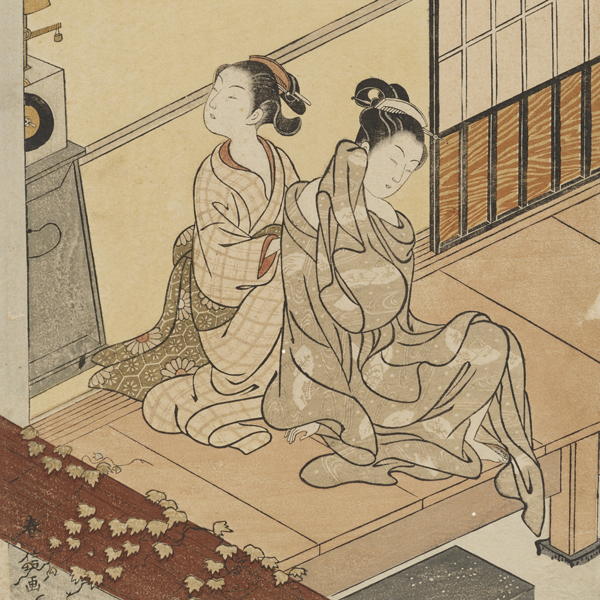The Art of Ukiyo–e | 17th–19th century
-

“Clock Striking in the Evening” from the Series Eight Parlor Scenes (detail), By Suzuki Harunobu, Edo period, 18th century
Japanese Gallery (Honkan) Room 10
November 7, 2023 (Tue) - December 3, 2023 (Sun)Prints and paintings called ukiyo–e were the first genre of art enjoyed by common people on a large scale. Economic growth contributed to the creation of this genre in the 17th century. As living standards improved, common people developed an urban culture that was passionate about trends, fashion, and entertainment.
At first, ukiyo–e depicted the celebrities of the day, especially actors of the kabuki theater and courtesans of the pleasure quarters (the legal brothel district). The subject matter later expanded to include topics like seasonal festivals, travel spots, and landscapes.Techniques for making ukiyo–e also changed over time. Early ukiyo–e were painted by hand. Artisans later started carving images into blocks of wood and using these blocks to print ukiyo–e in large numbers. These black–and–white prints were much more affordable. As carving and printing techniques were refined, prints with a brilliant range of colors became possible.
| Designation | Name | Creation/ Excavation/ Provenance |
Period | Acquisition/ Ownership/ Accession Number |
CMT | ||
| Highlight | "An Autumn Excursion" from the Series "The Tale of Genji in Stylish Contemporary Guise" | By Isoda Koryūsai (born 1735) | Edo period, 18th century | A-10569-2223 | |||
| "The Asakusa Rice Fields and Torinomachi Festival" from the Series "One Hundred Famous Views of Edo" | By Utagawa Hiroshige (1797–1858) | Edo period, 1857 | A-10569-7392 | ||||
| Highlight | Murasaki Shikibu | By Miyagawa Chōshun (1682–possibly 1752) | Edo period, 18th century | A-779 | |||
| Highlight | “Clock Striking in the Evening” from the Series "Eight Parlor Scenes" | By Suzuki Harunobu (possibly 1725–1770) | Edo period, 18th century | A-10569-107 |
